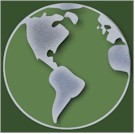Intermediate English
Lesson 7 - Food
Grammar
On This Page
- Phrases used with count and noncount nouns
- "Find the Mistake" review activity
Count/Non-count
Count nouns are things that you can count like chairs, apples, and people. Non-count nouns are things that you can't count like liquids and gases or things that are too small to count (like sand). We use different expressions with count and non-count nouns.
Count
To describe quantities
There are a lot.
There are some.
There are a few.
There aren't any.
Questions
Are there any _____?
How many are there?
Non-Count
To describe quantities
There is a lot.
There is some.
There is a little.
There isn't any.
Questions
Is there any _____?
How much is there?
Practice
Answer the questions with expressions to describe the quantity. In some there is more than one possible correct answer.
Fruits

Grains

Dairy

Protein

Instructions
|
Study English Abroad
You will find more information about studying English abroad and inexpensive alternatives to studying abroad in the Study Abroad area of Passport to English.
| Study Abroad Information Why study abroad? What to look for in a study abroad program Types of Programs Alternatives to Study Abroad Home Exchange |
Recommend Passport to English to your friends!
Click on NEXT to go to the next page in the lesson.


